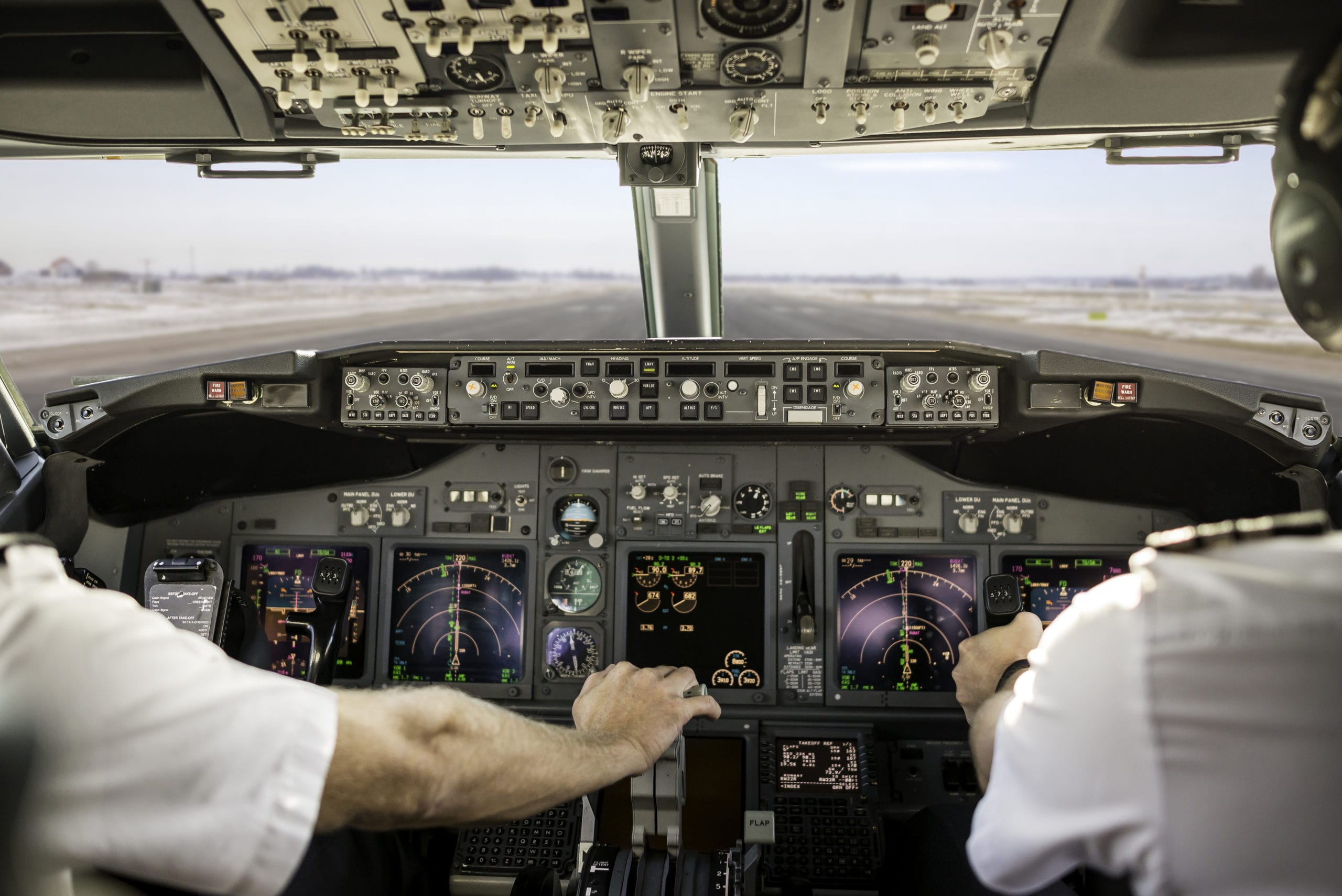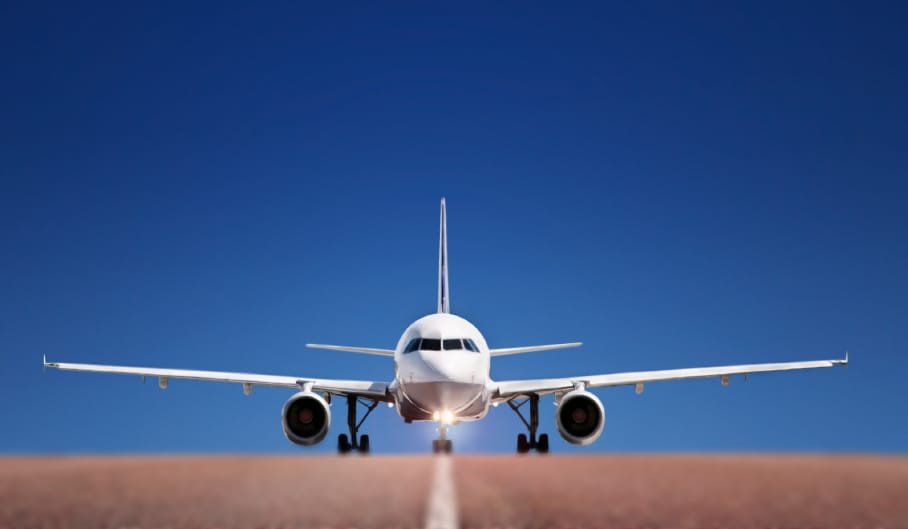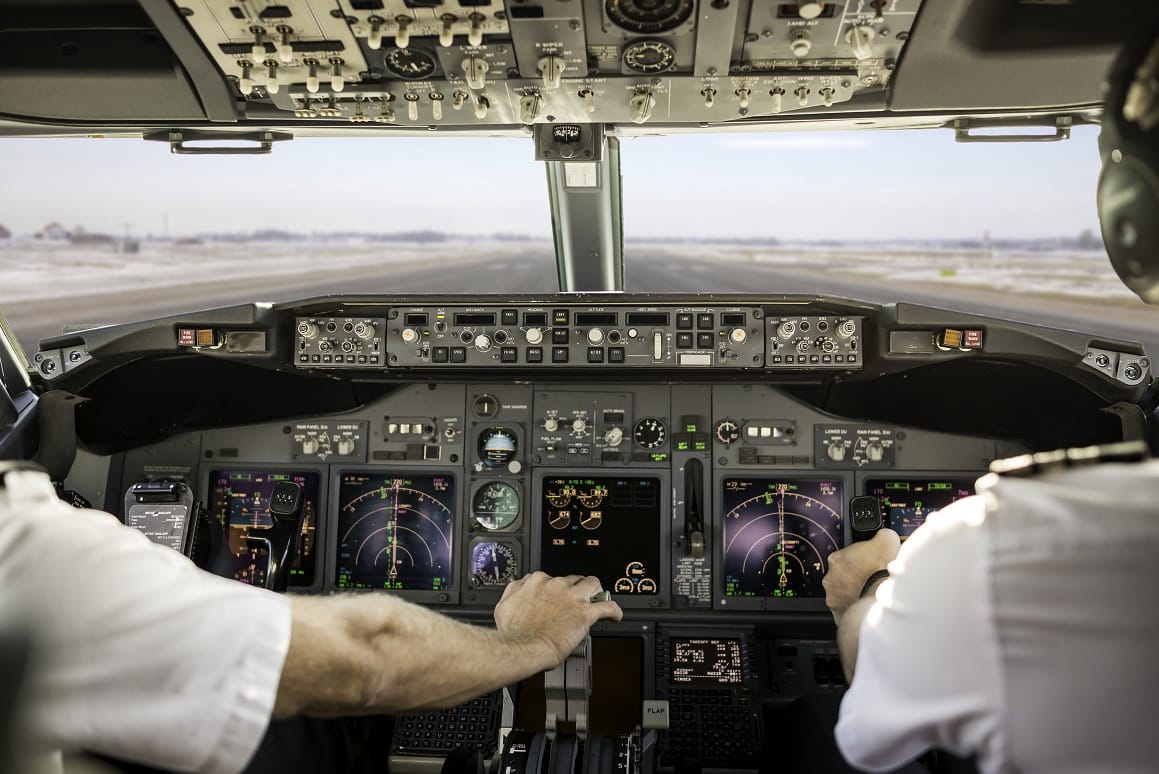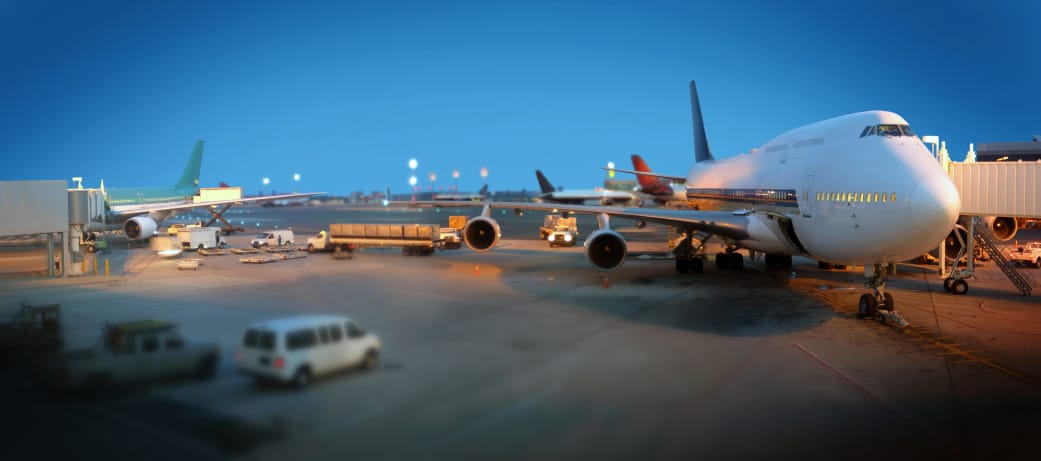When people ask about your career plans and you confidently say you want to be a pilot, you are probably excited about the path you have chosen. However, it can seem overwhelming to choose a flight school, climb into the cockpit for the first time, and begin your commercial pilot career. Here is a step-by-step guide to become a commercial pilot, including a discussion of what to look for in an educational program.
[lwptoc numeration=”none” numerationSuffix=”dot” title=”IN THIS ARTICLE:” titleFontSize=”30px” itemsFontSize=”20px” colorScheme=”inherit”]
Find an FAA-Approved Program for the Whole Journey
When choosing a flight school, it might seem tempting to choose a program that seems slick and easy, however, unless it’s approved by the FAA, you will run into obstacles when you apply for your private certificate, which is one of the first operational milestones to become a commercial pilot. Only those who have taken a Certified Pilot Training course are permitted to fly under FAA rules.
Choosing a flight school that can guide you from no flying experience to life as a professional pilot works to your advantage. Committing to a comprehensive flight school that provides a clear road from applying for your student pilot’s certificate to applying for a commercial pilot job can smooth the transitions between each phase of the process. The ability to work with a consistent program without a disrupted workflow and the necessity of adjusting to a new learning environment will help you concentrate on absorbing as much knowledge as you can. By staying with the same flight school, you can develop mentor relationships with your flight instructors, and settle into a stable location where you feel comfortable with the staff, fellow students, and equipment.
At some flight schools, the journey from zero to commercial pilot can take as little as two years, and progressing to a pilot with a multiengine rating (which airlines and many corporate jobs require), can only take an additional few months to a year. Staying within a consistent curriculum with step-by-step milestones and advancement based on merit will help you to plan more efficiently, focus on job opportunities, and study effectively. Likewise, bouncing from flight school to flight school can disrupt your workflow and distract you from building time or retaining knowledge in ground classes.
Focus on Ratings and Professional Operation to Become a Commercial Pilot
Choosing a quality flight school is important because not only will your flight instructor test you each step of the way, the FAA will as well, in practical tests as well as knowledge exams. As you meet the FAA’s various requirements to become a commercial pilot, the milestones become more difficult and require additional time in the cockpit.
This is the general schedule most pilots follow as they build a career as a pilot:
1) Apply for student pilot certificate:
Lessons can begin without one, but student pilots must have a student pilot certificate before soloing. They must fall within the FAA’s requirements for age, English fluency, and medical standards. As is the case with all FAA licenses, an exam with an FAA-approved doctor must take place before the certificate is valid.
2) Private pilot certificate:
This coursework and cockpit time is dedicated to learning the fundamentals for safe aviation. While private pilots may carry passengers and fly under certain weather conditions, they are not permitted to fly for money or any other form of compensation.
3) Instrument rating:
The instrument pilot rating is an “add-on” to the private pilot certificate which permits the pilot to fly in many more weather conditions than the private alone. Coursework involves intense meteorology study as well as time in the cockpit “flying blind” relying only on the airplane’s instruments. This is the point where most pilots who fly for themselves or leisure stop.
4) Commercial pilot certificate:
The private certificate teaches the pilot how to safely take off, cruise, and land. In addition, the commercial provides additional training to ensure that he or she can fly with smooth confidence and professionalism. Pilots aiming for such flying careers as crop dusting, banner towing, surveillance, and tour operation do not usually care to move beyond the commercial certificate.
5) Flight instructor certificate:
While it is not a requirement for pilots to become a CFI (Certified Flight Instructor) to earn a living as a pilot, many do so. The vast majority of airlines and corporate jobs demand hundreds of hours as pilot in command, and working as a flight instructor is a popular way to earn while sharpening one’s skills. There is usually a need for flight instructors, and many pilots who feel at home with their flight school stay on to mentor a new generation of pilots. Some aviators dedicate their entire careers to flight instruction.
6) Multi-engine rating:
The multi-engine rating (MEI) is a requirement to fly multi-engine aircraft. Having the MEI rating enables career flexibility and boosts a pilot’s attractiveness in the job market. To become a commercial pilot for an airline, the applicant must have an MEI on their resume.
Look at the Larger Employment Picture
For those seeking a Bachelor’s or Master’s degree in the aviation field, Colleges and Universities that combine general coursework with flight training are ideal. While some airlines do not require a degree, some do, and the ability to offer this additional qualification might set you apart in the corporate world. Some of the advantages are networking, mentorship and fellowship that may lead to employment opportunities.
Although the aviation world is currently combating the fallout from the COVID-19 shutdown, flight manifests in the United States have begun to increase as stay-at-home orders lift and tourist destinations reopen. Pilots who start training for a commercial career now should find themselves in a hot job market by the time they are eligible for hire. It is shortsighted to base career options on the current state of aviation; the conditions that caused the recent pilot shortage will still be in place by the time the industry reawakens. By choosing a comprehensive, reputable aviation University and working through the FAA’s mandated coursework, you will create the basis for an exciting career in flying.
California Aeronautical University is an FAA-approved flight school that provides not only the essentials of flight training to become a commercial pilot, but also offers programs in aviation maintenance, flight dispatch and business administration.
Ready to soar in your aviation career?
Mr. Matthew A. Johnston has over 23 years of experience serving various roles in education and is currently serving as the President of California Aeronautical University. He maintains memberships and is a supporting participant with several aviation promoting and advocacy associations including University Aviation Association (UAA), Regional Airline Association (RAA), AOPA, NBAA, and EAA with the Young Eagles program. He is proud of his collaboration with airlines, aviation businesses and individual aviation professionals who are working with him to develop California Aeronautical University as a leader in educating aviation professionals.









